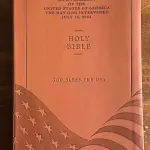My friend Dylan first introduced me to the show “Girls” during a brief stint I had living in Brooklyn. I fell in love with it. The writing was quirky and intelligent, Lena Dunham’s character didn’t look like someone from Sex and The City, and the strange manner in which it dealt with millennial life was refreshing. And even though it was wrought with Long-Island-white-girl issues (“first-world problems”), it had a flair and contemporary élan worthy of praise and notoriety.
But is the shows founder a child-molester? Lena Dunham’s new memoir, “Not That Kind of Girl,” has brought with it a dust-storm of drama, particularly over a few sections where she describes some troublesome situations with her younger sister. Here are the controversial passages (the first is an image, pointed out to me by awesome Make-Up Vlogger Rikki Poynter, the second is a written text from a few pages later):

“Do we all have uteruses?” I asked my mother when I was seven.
“Yes,” she told me. “We’re born with them, and with all our eggs, but they start out very small. And they aren’t ready to make babies until we’re older.” I look at my sister, now a slim, tough one-year-old, and at her tiny belly. I imagined her eggs inside her, like the sack of spider eggs in Charlotte’s Web, and her uterus, the size of a thimble.
“Does her vagina look like mine?”
“I guess so,” my mother said. “Just smaller.”
One day, as I sat in our driveway in Long Island playing with blocks and buckets, my curiosity got the best of me. Grace was sitting up, babbling and smiling, and I leaned down between her legs and carefully spread open her vagina. She didn’t resist and when I saw what was inside I shrieked.
My mother came running. “Mama, Mama! Grace has something in there!”
My mother didn’t bother asking why I had opened Grace’s vagina. This was within the spectrum of things I did. She just got on her knees and looked for herself. It quickly became apparent that Grace had stuffed six or seven pebbles in there. My mother removed them patiently while Grace cackled, thrilled that her prank had been a success.” (pp. 158-9)
Now, of course, Dunham has taken to a “rage spiral” defending herself on Twitter. She accuses right-wing media for twisting her words and placing the whole event out of context. After all, she was 7 and her little sister was 1. Can we really talk about blame, consent, and molestation if the culprit was only 7 years old?
Most people think we can. They rightly highlight Dunham’s incongruous defense of what she wrote. As one twitter post said: “Lena Dunham literally compared herself to a sexual predator and gets upset when people call her a sexual predator??????” Mary Williams, on the other hand, thinks Dunham’s memory and narration has to be off. She doesn’t think the story adds up.
Now I’m no Norman Rockwell conservative, but these passages are troubling, to say the least. As some of you wrestle with difficult passages in religious texts, I wonder how you all interpret these lines. Maybe you can all help me sort this out…
Kile Jones holds a Bachelors of Theology (B.Th.) from Faith Seminary, a Masters of Theological Studies (M.T.S.) and a Masters of Sacred Theology (S.T.M.) from Boston University. He also holds a Certificate in Science and Religion from the Boston Theological Institute. Mr. Jones has been published in Zygon: Journal of Religion and Science, Philosophy Now, Free Inquiry, World Futures, Human Affairs, and the Secular Web. He is the Founder/Editor-in-Chief of Claremont Journal of Religion (www.claremontjournal.com), and is the Founder/Director of Interview an Atheist at Church Day (interviewatheists.wordpress.com).











